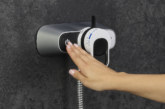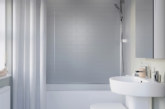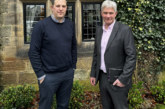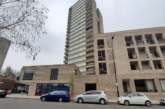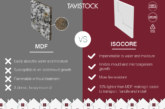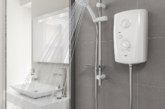Bathrooms and shower rooms in housing association properties are typically used by people with varying abilities — so as well as being safe, they also need to be accessible and easy to use. Chris Tranter, Product Manager at Bristan, offers advice on the latest inclusive bathroom products for the public sector.
In social housing, councils across the country are increasingly looking to set new targets to increase the number of homes accessible for wheelchair users. Charities such as Age UK say that currently only 7% of homes are classed as accessible.
In November 2018, the Home Builders Federation (HBF) sparked controversy when it made submissions to at least 17 authorities arguing that new local planning policies seeking more accessible housing could make it unprofitable to build new homes.
In response, leading charities said they were alarmed at its objections to planning policy proposals to make greater disability access mandatory. They said that without homes that enable us to live safely and independently for as long as possible, we will see increased and unsustainable pressure on our health and social care services and much-reduced quality of life for people in older age.
Habinteg, a prominent housing association specialising in providing accessible homes, argues that the demand for accessible housing cannot be met by this sector alone. Accessible, inclusive design principles are required in housing provision at every level — and although this starts with good policy, it also requires best practice from all of us.
When it comes to bathroom products, it is important for local authority and housing association specifiers to stay on top of the latest inclusive products. Safety, accessibility and efficiency are three key considerations that play a key role in most decision-making.
 Safety first
Safety first
One of the main safety challenges involved with water delivery products is to ensure that bacteria, such as legionella, is neutralised. The primary method of eliminating bacteria is to maintain a high-water temperature of 60˚C or above, which inhibits its growth. Furthermore, all outlets must be regularly flushed to prevent any internal build up. However, when water temperatures are as high as 60˚C, scalding becomes a very real concern.
There is an estimated 250,000 minor burn and scald incidents reported to GPs annually, and shockingly, almost 600 people a year are seriously injured from scalds caused by hot water. This means that water delivery hygiene needs to be balanced with hot water safety — particularly in environments that are required to meet the needs of vulnerable people and all age ranges.
The most effective way of maintaining and achieving the balance between high water temperature and infection control is to specify products with an in-built TMV (thermostatic mixing valve), or, alternatively, an ancillary TMV. TMVs allow water to be stored and distributed at a high enough temperature to kill harmful bacteria, but crucially, reducing it to a safe temperature at the point of use by mixing it with the cold supply. This means that systems are able to maintain a recommended safe water temperature of between 37˚C and 46˚C, depending on the application.
Accessible showers
In recent years, shower technology has developed to take into account the needs of the elderly and people with disabilities, without compromising on style or performance. There is now a wider choice for specifiers looking for products for use in local authority homes. For example, Bristan’s Joy Care is a BEAB Care and RNIB (Royal National Institute of Blind People) endorsed thermostatic electric shower that incorporates a large dial for ease of use, raised markings and an audible settings click, among many other features designed for the inclusive market.
Although Joy Care was designed with maximum inclusion as a priority, the shower design easily blends into any contemporary bathroom, with a sleek shape and modern flair, which is far removed from the drab accessibility products of the past.
Tap technology
Taps might initially be seen as simple devices to operate but people with various disabilities can struggle to gain the full control they need. Luckily, there is a growing range of products that can meet different needs. Taps such as Bristan’s Design Utility X-Head Kitchen range, for example, have coloured blue and red indices and a crosshead design that are easy to operate and are particularly useful for people with dementia. Alternatively, the Design Utility Lever Taps have a smooth quarter-turning mechanism, making them easier to turn on and off.
A key consideration with tap specification, particularly in the social housing sector, is how to save water and cut down on bills for tenants. A running tap wastes more than six litres of water a minute (EST) and a dripping tap can waste more than 5,500 litres of water a year. Taps are available that provide subtle resistance at the halfway point, raising the user’s awareness of the flow. Flow regulators are also included as standard in the design of certain models of taps and showers. These work by limiting the flow inside the connection, reducing water without making a significant impact on end user experience.
For local authority and housing association specifiers, it is important not to overlook targets for accessibility, in favour of meeting increasingly tight budgets. However by taking into account considerations around safety, accessibility and efficiency, specifiers can realistically achieve both — delivering bathroom products that are easy-to-use and suitable for users of varying needs.




